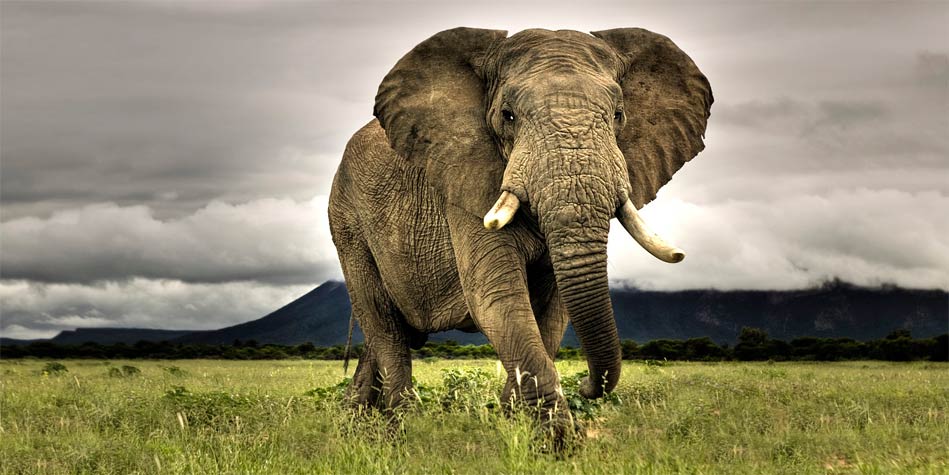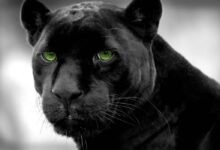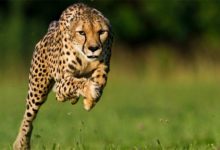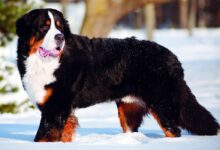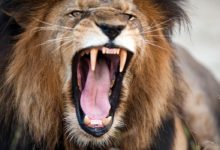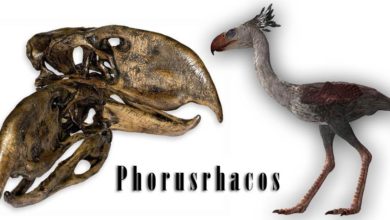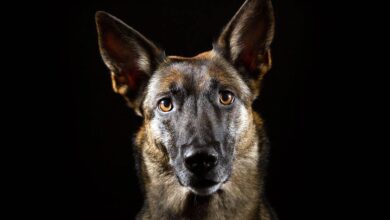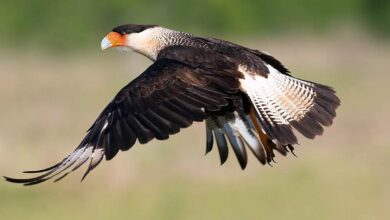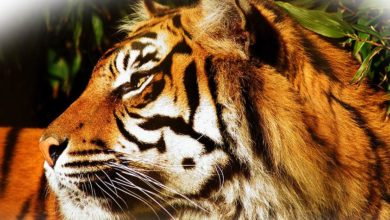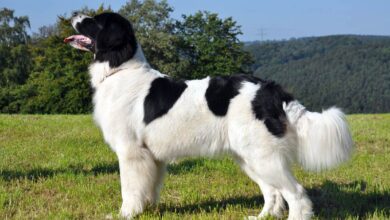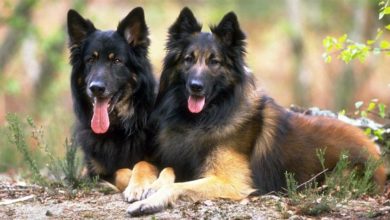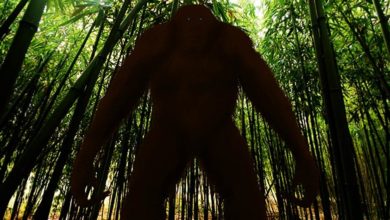The heaviest land animals – TOP 20
Below we present the summary of the 20 heaviest land animals. This list not only features purely terrestrial animals but also includes animals that inhabit both land and water, such as the walrus and elephant seal, which demonstrate remarkable adaptations to their environments.
22. African buffalo – 910 kg (2000 lbs)

African buffalo – Cape buffalo (Syncerus caffer)
The African buffalo, also known as the Cape buffalo, is a large, powerful herbivore that is native to the grasslands and savannas of sub-Saharan Africa. It is a member of the Bovidae family, which also includes cows, goats, and antelopes.
African buffaloes are typically dark brown or black in color, and they have a massive, stocky build with a large head and horns that curve sharply outward and then back toward the head. The horns of male buffaloes can grow up to 1.5 meters (5 feet) in length, and they are used for defense and for competing for mates.
African buffaloes are large, powerful animals that can grow up to 1.7 meters (5.6 feet) at shoulders and weigh up to 910 kg (2000 lbs).
African buffaloes are social animals that live in herds of up to several hundred individuals, which are led by a dominant male. The herds are highly mobile, moving between feeding and watering areas in search of grass and other vegetation. Buffaloes are known to be fierce and unpredictable, and they are considered one of the “big five” game animals of Africa, along with the lion, elephant, leopard, and rhinoceros.
Buffaloes play an important role in the ecosystem, as they help to maintain the grassland habitat by grazing on vegetation and spreading seeds through their dung. However, they can also be a threat to humans and livestock, and they are sometimes hunted for their meat, horns, and hide.
21. Yak – 1,000 kg (2,200 lb)
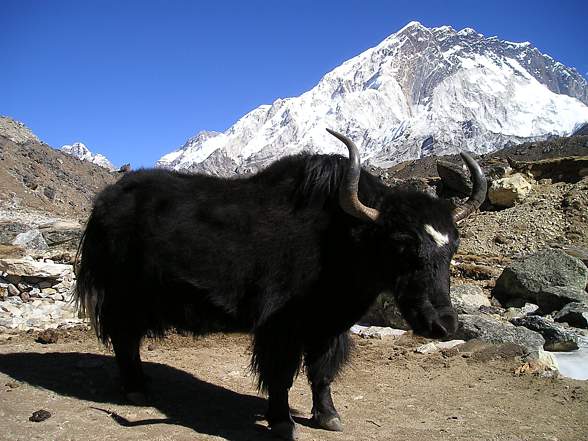
Yak (Bos grunniens)
The domestic yak is a large, long-haired, humped bovid (a member of the Bovidae family, which includes cows, goats, and antelopes) that is native to the Himalayan region of Asia. It is adapted to living in cold, high-altitude environments, and it is well-known for its ability to withstand extreme cold and carry heavy loads over long distances.
Domestic yaks are usually black or brown in color, with a thick, shaggy coat that helps to insulate them from the cold. They have a distinctive, large head with small, beady eyes and long, curved horns. Male yaks have a much larger hump on their back than females, which is made up of fatty tissue that helps to sustain them during the winter months.
Yaks are primarily used as draft animals, and they are often used to carry heavy loads of food, fuel, and other supplies over the rugged terrain of the Himalayas. They are also used for their milk, meat, and hide, which are considered valuable resources in their native region.
In addition to their domestic use, yaks are also found in the wild in certain areas of the Himalayas. Wild yaks are larger and more aggressive than their domestic counterparts, and they are classified as a vulnerable species due to habitat loss and overhunting.
Domestic yaks are large animals, with males weighing up to 1,000 kilograms (2,205 pounds) and females weighing up to 700 kilograms (1,543 pounds). Wild yaks are even larger, with males weighing up to 1,500 kilograms (3,307 pounds) and females weighing up to 1,000 kilograms (2,205 pounds).
20. European Bison – 1,000 kg (2,200 lb)
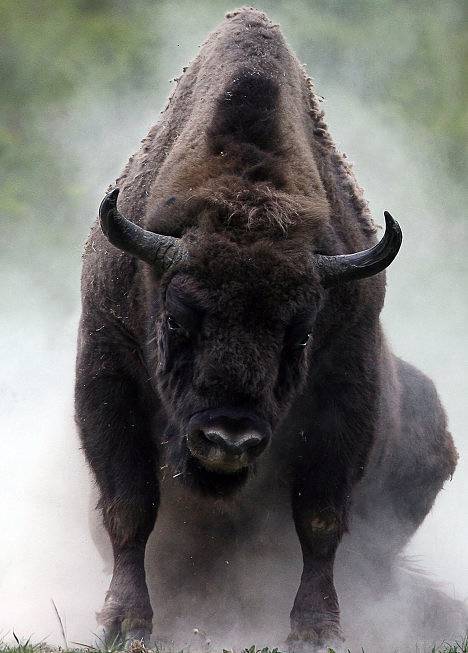
European bison (Bison bonasus)
The European bison, also known as the wisent, is a large, herbivorous mammal that is native to Europe. It is a member of the Bovidae family, which includes cows, goats, and antelopes.
European bison are typically dark brown in color, with a shaggy, long-haired coat that helps to insulate them from the cold. They have a massive, stocky build, with a large head and short, curved horns. Male bison have larger horns and a larger hump on their shoulders than females.
European bison are social animals that live in herds of up to several dozen individuals, which are led by a dominant male. They are highly mobile, moving between feeding and watering areas in search of grass and other vegetation. Bison are known to be fierce and unpredictable, and they are considered a symbol of strength and resilience in many European cultures.
Bison play an important role in the ecosystem, as they help to maintain the grassland habitat by grazing on vegetation and spreading seeds through their dung. However, they can also be a threat to humans and livestock, and they have been hunted for their meat, horns, and hide.
The European bison is classified as a vulnerable species due to habitat loss and overhunting, and conservation efforts are underway to protect and restore populations of these animals.
European bison are large animals, with males weighing up to 1,000 kg (2,200 lb) and females weighing up to 600 kilograms (1,323 pounds). They are typically about 1.8 to 2.1 m (5.9 to 6.9 ft) tall at shoulders and can be up to 3.7 meters (12 feet) long from head to tail (2.8 to 3.3 m (9.2 to 10.8 ft) without a tail). Overall, European bison are slightly smaller than their North American relatives, the American bison, which can weigh up to 1,400 kg (3,000 lb) and stand up to 1.86 to 2.01 m (6 ft 1 in to 6 ft 7 in) tall at shoulders.
19. Polar bear – 1,002 kg (2,209 lb)
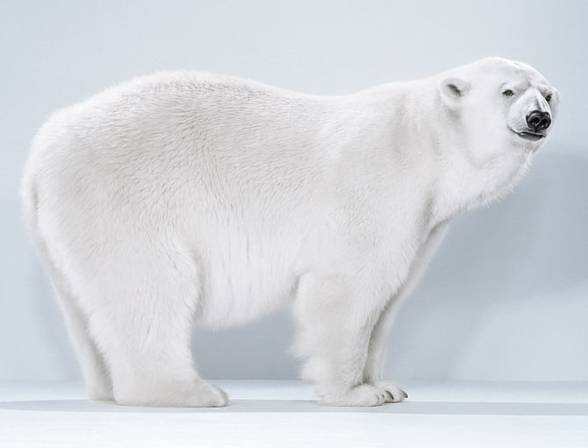
Polar bear (Ursus maritimus)
The polar bear is a large, carnivorous mammal that is native to the Arctic region of North America, Europe, and Asia. It is a member of the Ursidae family, which includes bears, pandas, and giant pandas.
Polar bears are well-adapted to living in the cold, harsh environment of the Arctic, with a thick layer of fat and a long, shaggy coat of white or yellowish-white fur. They have a stocky build and a large head, with small ears and a long, narrow snout. Male polar bears are larger than females, with males weighing up to 600 kilograms (1,323 pounds) and females weighing up to 300 kilograms (661 pounds).
Polar bears are the largest land carnivores on Earth, with males weighing up to 600 kilograms (1,323 pounds) and females weighing up to 300 kilograms (661 pounds). They are also among the tallest bears, with males standing up to 1.5 meters (5 feet) tall at the shoulder and females standing up to 1.2 meters (4 feet) tall. The largest polar bear on record, reportedly weighing 1,002 kg (2,209 lb).
Polar bears are skilled hunters that feed on seals and other marine animals, and they are known for their ability to swim long distances in the icy waters of the Arctic. They are also skilled at conserving energy, and they can survive for long periods of time without food by relying on their fat reserves.
Polar bears are vulnerable to habitat loss and climate change, as the loss of sea ice due to rising temperatures threatens their ability to hunt and reproduce. They are also at risk from pollution and overhunting, and they are protected by law in many of the countries where they are found.
Overall, polar bears are massive animals, with a stocky build and a large head. They have long, sharp claws that are well-suited for hunting and climbing on ice, and they have a thick layer of fat that helps to insulate them from the cold and provide energy during times of food scarcity.
Despite their large size and formidable appearance, polar bears are skilled at conserving energy and are capable of fasting for long periods of time. They are also excellent swimmers, and they can swim long distances in the icy waters of the Arctic in search of food.
18. Kodiak bear – 1,090 kg (2,400 lb)
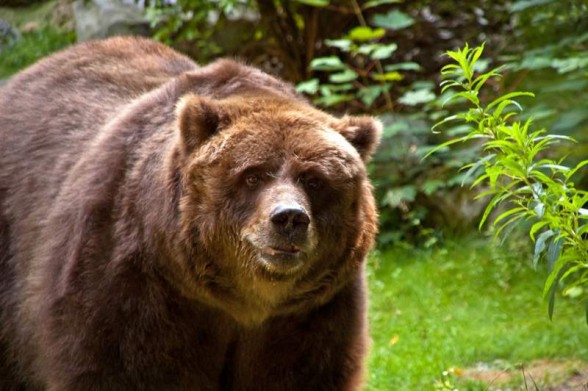
Kodiak bear (Ursus arctos middendorffi)
The Kodiak bear, also known as the Alaskan brown bear or the Alaskan grizzly bear, is a subspecies of the brown bear native to the Kodiak Archipelago in southwestern Alaska. It is the largest subspecies of brown bear and one of the largest bear species in the world, with males weighing between 1,100 and 1,500 pounds (500 and 680 kilograms) and females weighing between 660 and 1,100 pounds (300 and 500 kilograms).
Kodiak bears have a distinctive appearance, with a brown or reddish-brown coat and a large head. They have a strong, muscular build and long, curved claws, which they use for climbing trees and foraging for food. They are omnivorous, feeding on a variety of plant material, insects, and small mammals, as well as larger prey such as deer and sheep.
In terms of length, Kodiak bears can reach up to 8.5 feet (2.6 meters) from the nose to the tip of the tail. They are typically solitary animals, although they may be found in small groups during the breeding season.
Kodiak bears are not currently listed as threatened on the International Union for Conservation of Nature’s Red List of Threatened Species, although some subpopulations may be at risk from habitat loss and other threats. Conservation
The height of a Kodiak bear (Ursus arctos middendorffi) varies depending on the individual, but males tend to be larger than females. They stand about 4 to 5 feet (1.2 to 1.5 meters) tall at the shoulder. In terms of weight, males typically weigh between 1,100 and 1,500 pounds (500 and 680 kilograms), while females weigh between 660 and 1,100 pounds (300 and 500 kilograms).
17. Asian water buffalo – 1,200 kg (2,650 lbs)

Water buffalo (Bubalus bubalis)
The water buffalo, also known as the Asian buffalo, is a large, semi-aquatic bovid (a member of the Bovidae family, which includes cows, goats, and antelopes) that is native to Southeast Asia and South Asia. It is closely related to the African buffalo (Syncerus caffer), and it is the ancestor of the domestic buffalo that is widely used for milk and meat production in many parts of the world.
Water buffalo have a massive, stocky build, with a large head and horns that curve outward and then back toward the head. They are usually dark brown or black in color, with a long, shaggy coat of hair that helps to insulate them from the heat and cold. Male water buffalo have larger horns and a larger hump on their shoulders than females.
Water buffalo are highly adapted to living in wetland environments, and they are often found near rivers, marshes, and other bodies of water. They are powerful swimmers and can dive to the bottom of shallow rivers to forage for food. They are also important draft animals, and they are used for plowing fields, carrying heavy loads, and pulling carts.
Water buffalo are an important source of milk, meat, and hide in many parts of Asia, and they are also used for their dung, which is used as a fuel and fertilizer. However, they are also threatened by habitat loss and overhunting, and conservation efforts are underway to protect and restore populations of these animals.
Water buffalo are large animals, with males weighing up to 1,000 kilograms (2,205 pounds) and females weighing up to 700 kilograms (1,543 pounds). They are typically about 129–133 cm (51–52 in) tall at the shoulder (up to 160 cm (63 in)) and can be up to 3.7 meters (12 feet) long from head to tail. Water buffalo have a massive, stocky build, with a large head and horns that curve outward and then back toward the head. They have a long, shaggy coat of hair that helps to insulate them from the heat and cold, and they have a distinctive, humped shoulder region.
16. Gaur – 1,500 kg (3,300 lb)
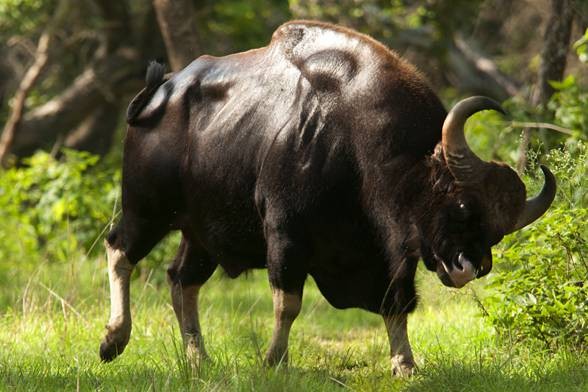
Gaur (Bos gaurus)
The gaur, also known as the Indian bison, is a large, herbivorous mammal that is native to South and Southeast Asia. It is a member of the Bovidae family, which includes cows, goats, and antelopes.
Gaur have a massive, stocky build, with a large head and horns that curve outward and then back toward the head. They are usually dark brown or black in color, with a short, dense coat of hair that helps to insulate them from the heat and cold. Male gaur have larger horns and a larger hump on their shoulders than females.
Gaur are social animals that live in herds of up to several dozen individuals, which are led by a dominant male. They are highly mobile, moving between feeding and watering areas in search of grass and other vegetation. Gaur are known to be fierce and unpredictable, and they are considered one of the “big five” game animals of Asia, along with the elephant, rhinoceros, tiger, and water buffalo.
Gaur play an important role in the ecosystem, as they help to maintain the grassland habitat by grazing on vegetation and spreading seeds through their dung. However, they can also be a threat to humans and livestock, and they have been hunted for their meat, horns, and hide.
The gaur is classified as a vulnerable species due to habitat loss and overhunting, and conservation efforts are underway to protect and restore populations of these animals.
Gaurs are large animals, with males weighing up to 1,500 kg (3,300 lb) and females weighing up to 700 kilograms (1,543 pounds). They are typically about 1.7 meters (5.6 feet) tall at the shoulder and can be up to 3.7 meters (12 feet) long from head to tail. Gaurs have a massive, stocky build, with a large head and horns that curve outward and then back toward the head. They have a short, dense coat of hair that helps to insulate them from the heat and cold, and they have a distinctive, humped shoulder region.
15. Draft (draught) horse – 1,524 kilograms (3,360 lb)

Draft (draught) horse
Draft horses, also known as draught horses, are large, powerful horses that are bred specifically for their strength and ability to pull heavy loads. They are typically used for farming, forestry, and other types of heavy work, and they are known for their calm, docile temperament and steady, reliable nature.
Draft horses are usually larger and heavier than other types of horses, with a sturdy, muscular build and thick, strong legs. They have a large head with a broad forehead, and they often have a thick mane and tail. They are usually solid-colored, with common colors including black, brown, and chestnut.
There are several different breeds of draft horses, including the Belgian, Clydesdale, Shire, and Percheron. Each breed has its own distinctive characteristics and is suited to different types of work. For example, the Belgian breed is known for its strength and versatility, while the Clydesdale breed is known for its impressive size and striking appearance.
In addition to their work in farming and forestry, draft horses are also used for riding, driving, and other recreational activities. They are generally considered to be gentle and easy to work with, and they have a strong work ethic and a willingness to please.
Draft horses are generally larger and heavier than other types of horses, with a sturdy, muscular build and thick, strong legs. They typically stand between 16 and 18 hands (64 to 72 inches or 163 to 183 centimeters) at the shoulder and weigh between 1,000 and 2,000 pounds (454 to 907 kilograms). However, there can be some variation in size within and between different draft horse breeds.
For example, the Belgian breed is known for its strength and versatility, and individuals within this breed can range in size from 15 to 17 hands (60 to 68 inches or 152 to 173 centimeters) at the shoulder and weigh between 1,500 and 2,000 pounds (680 to 907 kilograms). The Clydesdale breed is known for its impressive size and striking appearance, and individuals within this breed can range in size from 16 to 18 hands (64 to 72 inches or 163 to 183 centimeters) at the shoulder and weigh between 1,500 and 2,000 pounds (680 to 907 kilograms).
Overall, draft horses are massive animals, with a strong, muscular build and a calm, docile temperament. They are well-suited for heavy work and are known for their strength, stamina, and versatility.
14. American bison – 1,724 kg (3,800 lb)* in captivity
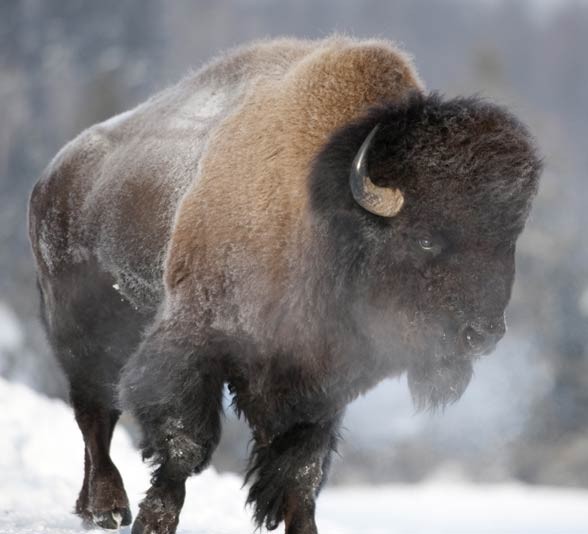
American bison (Bison bison)
The American bison, also known as the buffalo, is a large, herbivorous mammal that is native to North America. It is a member of the Bovidae family, which includes cows, goats, and antelopes.
American bison have a massive, stocky build, with a large head and horns that curve outward and then back toward the head. They are usually brown in color, with a short, dense coat of hair that helps to insulate them from the heat and cold. Male bison have larger horns and a larger hump on their shoulders than females.
American bison are social animals that live in herds of up to several hundred individuals, which are led by a dominant male. They are highly mobile, moving between feeding and watering areas in search of grass and other vegetation. Bison are known to be fierce and unpredictable, and they are considered a symbol of strength and resilience in many North American cultures.
Bison play an important role in the ecosystem, as they help to maintain the grassland habitat by grazing on vegetation and spreading seeds through their dung. However, they can also be a threat to humans and livestock, and they have been hunted for their meat, horns, and hide.
The American bison is classified as a near-threatened species due to habitat loss and overhunting, and conservation efforts are underway to protect and restore populations of these animals.
American bison are large animals, with males weighing up to 1,100 kilograms (2,425 pounds) and females weighing up to 700 kilograms (1,543 pounds). They are typically about 1.8 meters (6 feet) tall at the shoulder and can be up to 3.7 meters (12 feet) long from head to tail. American bison have a massive, stocky build, with a large head and horns that curve outward and then back toward the head. They have a short, dense coat of hair that helps to insulate them from the heat and cold, and they have a distinctive, humped shoulder region.
13. Saltwater crocodile – 2,000 kg (4,400 lb)
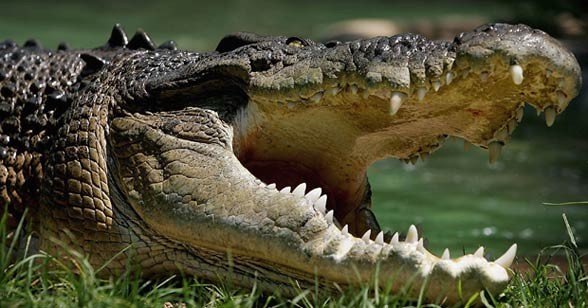
Saltwater crocodile (Crocodylus porosus)
The saltwater crocodile, also known as the estuarine crocodile, is the largest living reptile on Earth and is native to the tropical regions of Southeast Asia, Northern Australia, and the surrounding islands. It is a member of the Crocodylidae family, which also includes the American crocodile and the Nile crocodile.
It is also called the estuarine crocodile, Indo-Pacific crocodile, marine crocodile, sea crocodile, and informally as the saltie.
Saltwater crocodiles have a large, heavy build, with a long, powerful tail and a strong, thick body. They are typically dark green or brown in color, with a lighter underside and a rough, armored skin that is covered in bony plates called osteoderms. Saltwater crocodiles have a long, narrow snout with sharp, pointed teeth, and they have small, beady eyes that are set high on the head, which helps them to see above the water while they are submerged.
Saltwater crocodiles are apex predators and are known to be aggressive and opportunistic hunters. They are skilled swimmers and can move quickly through the water, and they are also powerful climbers and have been known to drag their prey up onto land. Saltwater crocodiles are found in a variety of habitats, including rivers, swamps, and coastal areas, and they are known to travel long distances in search of food and mates.
Saltwater crocodiles are a threatened species due to habitat loss and hunting, and conservation efforts are underway to protect and restore populations of these animals.
Saltwater crocodiles are the largest living reptile on Earth, and they can grow to be very large in size. Adult males can reach lengths of up to 7 meters (23 feet) and weigh up to 1,000–1,300 kg (2,200–2,900 lb), while females are generally smaller, reaching lengths of up to 4 meters (13 feet) and weighing up to 400 kilograms (881 pounds). Very large, aged males can exceed 6 m (20 ft) in length and weigh up to 2,000 kg (4,400 lb).
Saltwater crocodiles have a large, heavy build, with a long, powerful tail and a strong, thick body. They are typically dark green or brown in color, with a lighter underside and a rough, armored skin that is covered in bony plates called osteoderms. They have a long, narrow snout with sharp, pointed teeth, and they have small, beady eyes that are set high on the head, which helps them to see above the water while they are submerged.
Overall, saltwater crocodiles are massive animals that are adapted to living in a variety of habitats, including rivers, swamps, and coastal areas. They are powerful swimmers and climbers, and they are known to be aggressive and opportunistic hunters. Despite their size and formidable appearance, they are a threatened species due to habitat loss and hunting, and conservation efforts are underway to protect and restore populations of these animals.
12. Giraffe – 2,000 kg (4,400 lb)
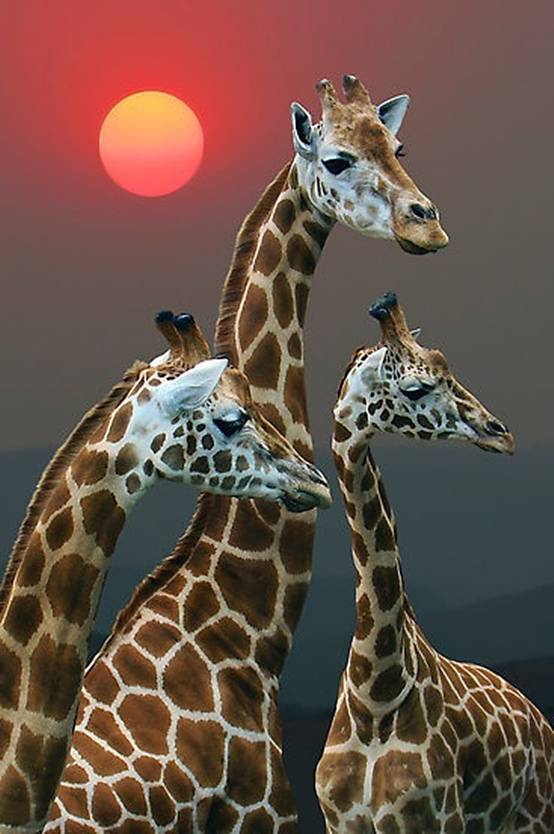
Giraffe
The giraffe is a tall, herbivorous mammal that is native to the savannas and woodlands of Africa. It is the tallest living animal on Earth, and it is a member of the Giraffidae family, which also includes the okapi.
Giraffes have a long, slender neck and a tall, narrow body, and they are typically covered in a pattern of brown and white spots. They have long, thin legs and hooves that are adapted for standing on soft, uneven ground, and they have a long, prehensile tongue that they use to grasp leaves and twigs from trees. Giraffes have a small head with large, expressive eyes and long, tufted ears, and they have a pair of short, bony horns on the top of their head.
Giraffes are social animals that live in herds of up to several dozen individuals, which are led by a dominant male. They are highly mobile, moving between feeding and watering areas in search of leaves, twigs, and other vegetation. Giraffes are known to be gentle and peaceful, and they have a unique method of communicating using a series of low-frequency sounds that are too low for humans to hear.
Giraffes are an important species in the ecosystem, as they help to disperse seeds through their dung and maintain the structure of the savanna habitat by grazing on trees and other vegetation. However, they are threatened by habitat loss and poaching, and conservation efforts are underway to protect and restore populations of these animals.
Giraffes are the tallest living animal on Earth, and they are known for their long, slender neck and tall, narrow body. Adult giraffes can reach heights of up to 5.5 meters (18 feet) and weigh up to 1,600 kilograms (3,527 pounds). However, there can be some variation in size within and between different giraffe subspecies.
Giraffes have a long, slender neck and a tall, narrow body, and they are typically covered in a pattern of brown and white spots. They have long, thin legs and hooves that are adapted for standing on soft, uneven ground, and they have a small head with large, expressive eyes and long, tufted ears. They also have a pair of short, bony horns on the top of their head, and they have a long, prehensile tongue that they use to grasp leaves and twigs from trees.
Overall, giraffes are massive animals that are adapted to living in the savannas and woodlands of Africa. They are gentle and peaceful, and they play an important role in the ecosystem as they help to disperse seeds through their dung and maintain the structure of the savanna habitat by grazing on trees and other vegetation. However, they are threatened by habitat loss and poaching, and conservation efforts are underway to protect and restore populations of these animals.
11. Sumatran rhinoceros – 2,000 kg (4,400 lb)
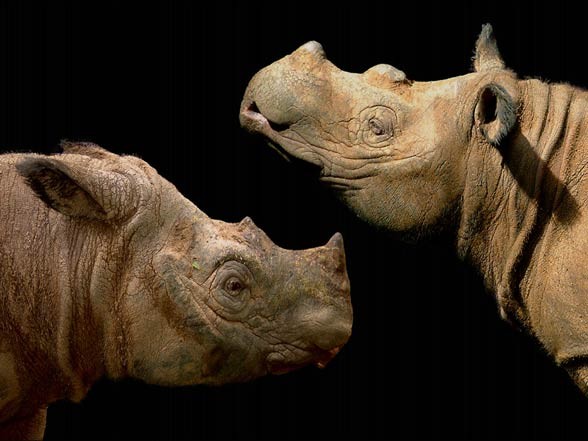
Sumatran rhinoceros (Dicerorhinus sumatrensis)
The Sumatran rhinoceros is a small, herbivorous mammal that is native to the rainforests of Indonesia and Malaysia. It is a member of the Rhinocerotidae family, which also includes the white rhinoceros, the black rhinoceros, and the Indian rhinoceros.
Sumatran rhinoceroses are the smallest of the rhinoceros species, with adults weighing up to 1,000 kilograms (2,205 pounds) and standing up to 1.5 meters (5 feet) tall at the shoulder. They have a stocky, muscular build, with a large head and a thick, wrinkled skin that is covered in short, coarse hairs. They have a distinctive, hook-shaped horn on the top of their head, and they have small, beady eyes and large, floppy ears.
Sumatran rhinoceroses are solitary animals that are rarely seen in the wild, and they are known to be elusive and reclusive. They are found in a variety of rainforest habitats, including lowland forests, montane forests, and swamp forests, and they are known to be active during the day and night. Sumatran rhinoceroses are highly adapted to living in the rainforest, and they are skilled climbers and swimmers.
Sumatran rhinoceroses are a critically endangered species due to habitat loss, poaching, and other human activities, and they are one of the rarest and most threatened species of rhinoceros in the world. Conservation efforts are underway to protect and restore populations of these animals.
10. Walrus – 2,300 kg (5,070 lb)
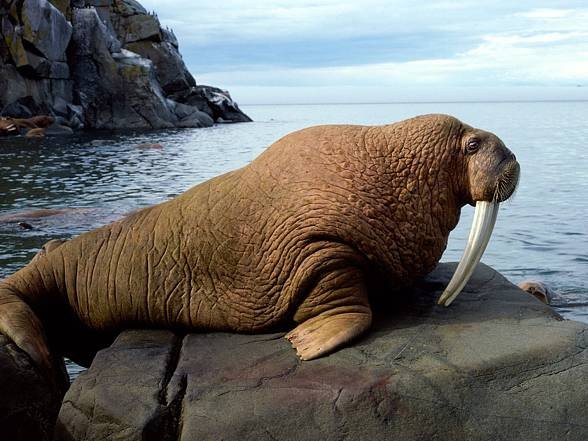
Walrus (Odobenus rosmarus)
Walruses are large, semi-aquatic marine mammals that are native to the Arctic regions of the Northern Hemisphere. Adult males can reach lengths of up to 3.6 meters (12 feet) and weigh up to 2,300 kg (5,070 lb), while females are generally smaller, reaching lengths of up to 3 meters (9.8 feet) and weighing up to 1,000 kilograms (2,205 pounds).
Walruses have a large, bulky build, with a long, tusked head and a thick layer of blubber that helps to insulate them from the cold. They are typically brown or gray in color, with a lighter underside and a rough, wrinkled skin. They have two long, curved tusks that are used for defense, feeding, and display, and they have small, beady eyes and large, flat flippers that are used for swimming and climbing onto ice floes.
Walruses are social animals that live in herds of up to several hundred individuals, which are led by a dominant male. They are highly mobile, moving between feeding and resting areas in search of food. Walruses are known to be curious and intelligent, and they are skilled divers and swimmers, able to dive to depths of up to 100 meters (328 feet) in search of food.
Walruses are found in a variety of marine environments, including the Arctic Ocean, the Bering Sea, and the North Atlantic Ocean, and they are known to be highly dependent on sea ice for feeding, breeding, and resting.
Overall, walruses are massive animals that are adapted to living in the cold, harsh environment of the Arctic. They are skilled divers and swimmers, and they are known to be curious and intelligent. Walruses are an important species in the Arctic ecosystem, and they play a key role in maintaining the balance of the marine environment.
9. Black rhinoceros – 2,900 kg (6,400 lb)
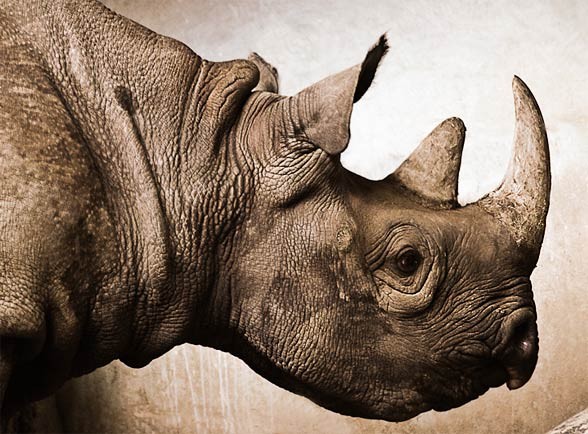
Black rhinoceros, black rhino, hook-lipped rhinoceros (Diceros bicornis)
The black rhinoceros, also known as the hook-lipped rhinoceros, is a large, herbivorous mammal that is native to the savannas and woodlands of Africa. It is a member of the Rhinocerotidae family, which also includes the white rhinoceros, the Sumatran rhinoceros, and the Indian rhinoceros.
Black rhinoceroses are large, herbivorous mammals that are native to the savannas and woodlands of Africa. Adult males can reach lengths of up to 4 meters (13 feet) and weigh up to 2,900 kg (6,400 lb), while females are generally smaller, reaching lengths of up to 3.5 meters (11.5 feet) and weighing up to 1,300 kilograms (2,866 pounds). An adult black rhinoceros stands 1.4–1.8 m (55–71 in) high at shoulders.
Black rhinoceroses are distinguished from other rhinoceros species by their hook-shaped upper lip, which is used for feeding on leaves and twigs. They have a stocky, muscular build, with a large head and a thick, wrinkled skin that is covered in short, coarse hairs. They have two short, curved horns on the top of their head, and they have small, beady eyes and large, floppy ears.
Black rhinoceroses are solitary animals that are rarely seen in the wild, and they are known to be elusive and reclusive. They are found in a variety of savanna and woodland habitats, including grasslands, bushlands, and forests, and they are known to be active during the day and night. Black rhinoceroses are highly adapted to living in the savanna, and they are skilled climbers and swimmers.
Black rhinoceroses are a critically endangered species due to habitat loss, poaching, and other human activities, and they are one of the rarest and most threatened species of rhinoceros in the world. Conservation efforts are underway to protect and restore populations of these animals.
8. Javan rhinoceros – 2,300 kg (5,070 lb)
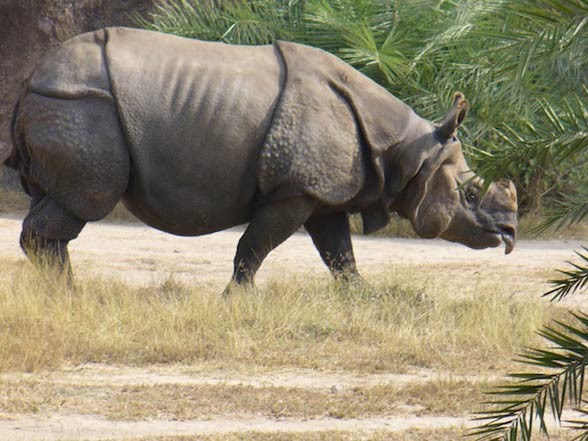
Javan rhinoceros (Rhinoceros sondaicus)
The Javan rhinoceros is a small, herbivorous mammal that is native to the rainforests of Java, Indonesia and Vietnam. It is a member of the Rhinocerotidae family, which also includes the white rhinoceros, the black rhinoceros, and the Sumatran rhinoceros.
The length of Javan rhinos including their head is 2 to 4 metres (6.5 to 13 feet), and they can reach a height of 1.4–1.7 m (4.6–5.6 ft) and weigh up to 2,300 kg (5,070 lb), while females are generally smaller, reaching lengths of up to 2.5 meters (8.2 feet) and weighing up to 1,000 kilograms (2,205 pounds).
Javan rhinoceroses have a stocky, muscular build, with a large head and a thick, wrinkled skin that is covered in short, coarse hairs. They are typically gray or brown in color, with a lighter underside and a distinctive, single horn on the top of their head. They have small, beady eyes and large, floppy ears, and they have a pair of short, curved tusks on the sides of their upper jaw.
Javan rhinoceroses are solitary animals that are rarely seen in the wild, and they are known to be elusive and reclusive. They are found in a variety of rainforest habitats, including lowland forests, montane forests, and swamp forests, and they are known to be active during the day and night. Javan rhinoceroses are highly adapted to living in the rainforest, and they are skilled climbers and swimmers.
Javan rhinoceroses are a critically endangered species due to habitat loss, poaching, and other human activities, and they are one of the rarest and most threatened species of rhinoceros in the world. Conservation efforts are underway to protect and restore populations of these animals.
7. Indian rhinoceros – 4,000 kg (8,820 lb)
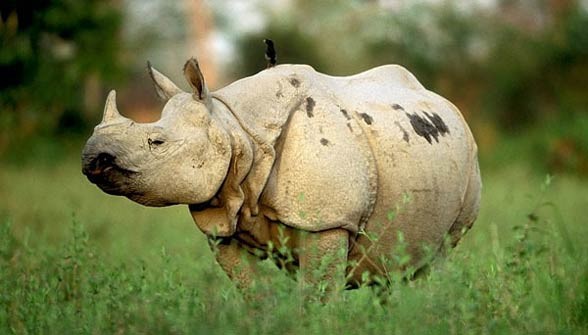
Indian rhinoceros (Rhinoceros unicornis)
The Indian rhinoceros, also known as the one-horned rhinoceros, is a large, herbivorous mammal that is native to the grasslands and wetlands of northern and northeastern India and Nepal. It is a member of the Rhinocerotidae family, which also includes the white rhinoceros, the black rhinoceros, and the Sumatran rhinoceros.
Adult males can reach lengths of up to 4 meters (13 feet), weigh up to 4,000 kg (8,820 lb) and a shoulder height of 170–186 cm (5.58–6.10 ft). Females are generally smaller, reaching lengths of up to 3.5 meters (11.5 feet), weighing up to 1,600 kilograms (3,527 pounds) and a shoulder height of 148–173 cm (4.86–5.68 ft).
Indian rhinoceroses have a stocky, muscular build, with a large head and a thick, wrinkled skin that is covered in short, coarse hairs. They are typically gray or brown in color, with a lighter underside and a distinctive, single horn on the top of their head. They have small, beady eyes and large, floppy ears, and they have a pair of short, curved tusks on the sides of their upper jaw.
Indian rhinoceroses are solitary animals that are rarely seen in the wild, and they are known to be elusive and reclusive. They are found in a variety of grassland and wetland habitats, including floodplains, marshes, and swamps, and they are known to be active during the day and night. Indian rhinoceroses are highly adapted to living in the grasslands and wetlands of their native range, and they are skilled swimmers and climbers.
Indian rhinoceroses are a vulnerable species due to habitat loss, poaching, and other human activities, and conservation efforts are underway to protect and restore populations of these animals.
6. Hippopotamus – 4,500 kg (9,920 lb)
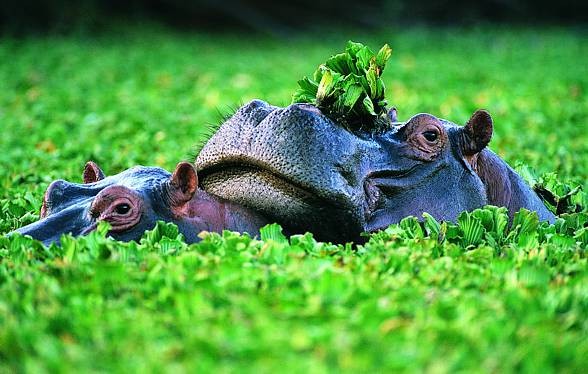
Hippopotamus (Hippopotamus amphibius)
The hippopotamus, also known as the hippo, is a large, semi-aquatic mammal that is native to the rivers, lakes, and swamps of sub-Saharan Africa. It is a member of the Hippopotamidae family, which also includes the pygmy hippopotamus.
Adult males can reach lengths of up to 4 meters (13 feet) and weigh up to 1,500 kilograms (3,307 pounds), while females are generally smaller, reaching lengths of up to 3.5 meters (11.5 feet) and weighing up to 1,300 kilograms (2,866 pounds). Exceptionally large males have been recorded reaching 4,500 kg (9,920 lb). Exceptionally large males have been recorded reaching 4,500 kg (9,920 lb).
Hippopotamuses have a massive, barrel-shaped body, with a short, stocky legs and a large, bulbous head. They are typically gray or brown in color, with a lighter underside and a thick, smooth skin that is covered in a layer of mucus. They have large, pointed teeth that are exposed even when their mouth is closed, and they have small, beady eyes and large, floppy ears.
Hippopotamuses are social animals that live in groups called “schools” or “herds,” which are led by a dominant male. They are highly adapted to living in the water, and they are known to be strong swimmers and divers. Hippopotamuses are active during the day and night, and they spend most of their time in the water or in the shade, emerging to graze on grasses and other vegetation.
Hippopotamuses are a vulnerable species due to habitat loss, poaching, and other human activities, and conservation efforts are underway to protect and restore populations of these animals.
5. White rhinoceros – 4,500 kg (9,920 lb)
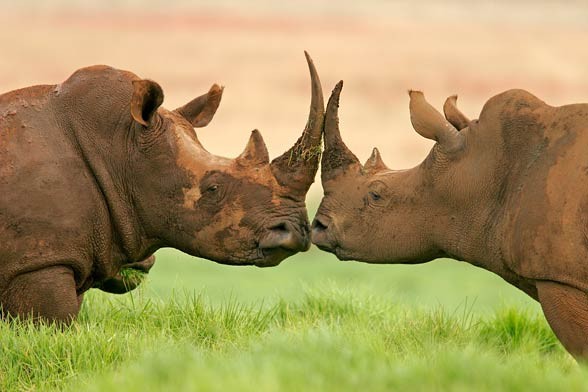
White rhinoceros, white rhino, square-lipped rhinoceros (Ceratotherium simum)
The white rhinoceros, also known as the square-lipped rhinoceros, is a large, herbivorous mammal that is native to the grasslands of southern and eastern Africa. It is a member of the Rhinocerotidae family, which also includes the black rhinoceros, the Indian rhinoceros, and the Sumatran rhinoceros.
White rhinoceroses have a stocky, muscular build, with a large head and a thick, wrinkled skin that is covered in short, coarse hairs. They are typically gray or brown in color, with a lighter underside and a distinctive, single horn on the top of their head. They have small, beady eyes and large, floppy ears, and they have a pair of short, curved tusks on the sides of their upper jaw.
Adult males can reach lengths of up to 4 meters (13 feet) and weigh up to 2,300 kilograms (5,071 pounds), while females are generally smaller, reaching lengths of up to 3.5 meters (11.5 feet) and weighing up to 1,600 kilograms (3,527 pounds). Large males have been recorded reaching 4,500 kg (9,920 lb).
White rhinoceroses are social animals that live in herds of up to several dozen individuals, which are led by a dominant male. They are found in a variety of grassland habitats, including savannas, bushlands, and woodlands, and they are known to be active during the day and night. White rhinoceroses are highly adapted to living in the grasslands of their native range, and they are skilled swimmers and climbers.
White rhinoceroses are a near threatened species due to habitat loss, poaching, and other human activities, and conservation efforts are underway to protect and restore populations of these animals.
4. Elephant seal – 5,000 kg (11,020 lb)
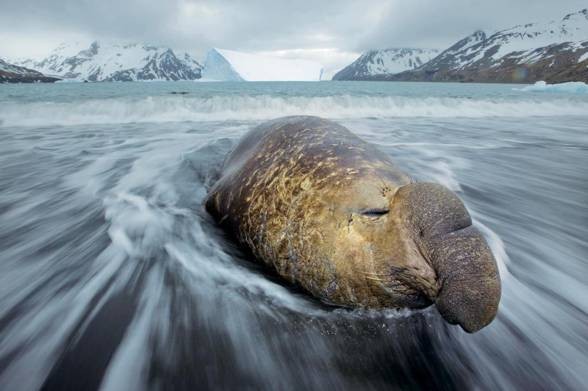
Elephant seal
The elephant seal is a large, carnivorous mammal that is native to the coasts and islands of the Southern Hemisphere. It is a member of the Phocidae family, which also includes seals, sea lions, and walruses.
Adult males can reach lengths of up to 5 meters (16.4 feet) and weigh up to 3,000 kg (7,000 lb), while females are generally smaller, reaching lengths of up to 3 meters (9.8 feet) and weighing up to 400 kilograms (881 pounds). Large males have been recorded reaching 5,000 kg (11,020 lb).
Elephant seals have a massive, barrel-shaped body, with a large, round head and a long, muscular snout. They are typically dark brown or gray in color, with a lighter underside and a thick, smooth skin that is covered in short, coarse hairs. They have small, beady eyes and large, floppy ears, and they have a pair of large, tusk-like teeth on the upper jaw.
Elephant seals are highly adapted to living in the water, and they are known to be strong swimmers and divers. They are found in a variety of coastal and island habitats, including sandy beaches, rocky shores, and kelp forests, and they are known to be active during the day and night. Elephant seals are social animals that live in large, hierarchical groups called “hauls,” which are led by a dominant male.
Elephant seals are a near threatened species due to habitat loss, pollution, and other human activities, and conservation efforts are underway to protect and restore populations of these animals.
3. African forest elephant – 7,000 kg (15,400 lb)
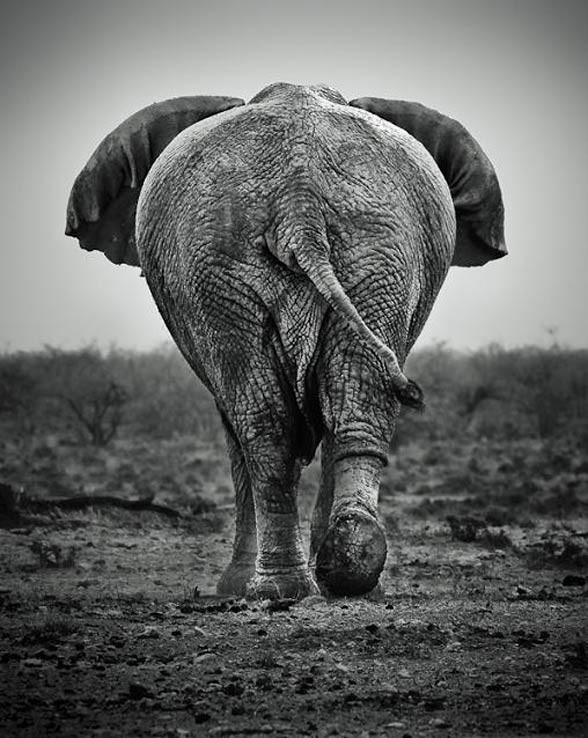
African forest elephant (Loxodonta cyclotis)
The African forest elephant is a large, herbivorous mammal that is native to the forests of central and West Africa. It is a member of the Elephantidae family, which also includes the African savanna elephant and the Asian elephant.
Adult males can reach lengths of up to 3 meters (9.8 feet) and weigh up to 4,500 kilograms (9,921 pounds), while females are generally smaller, reaching lengths of up to 2.5 meters (8.2 feet) and weighing up to 4,000 kg (8,800 lb). Large males have been recorded reaching 7,000 kg (15,400 lb). Males reach a shoulder height of 2.4–3.0 m (7 ft 10 in – 9 ft 10 in). Females are smaller at about 1.8–2.4 m (5 ft 11 in – 7 ft 10 in) tall at the shoulder.
African forest elephants have a smaller, more compact build than their savanna elephant relatives, with a shorter, thicker trunk and smaller, rounder ears. They are typically grey or brown in color, with a lighter underside and a thick, wrinkled skin that is covered in short, coarse hairs. They have a single, straight tusk on the upper jaw, which they use for digging, lifting, and carrying objects.
African forest elephants are highly adapted to living in the rainforests of their native range, and they are skilled climbers and swimmers. They are found in a variety of rainforest habitats, including lowland forests, montane forests, and swamp forests, and they are known to be active during the day and night. African forest elephants are social animals that live in herds of up to several dozen individuals, which are led by a dominant female.
African forest elephants are a critically endangered species due to habitat loss, poaching, and other human activities, and conservation efforts are underway to protect and restore populations of these animals.
2. Asian elephant – 7,000 kg (15,400 lb)
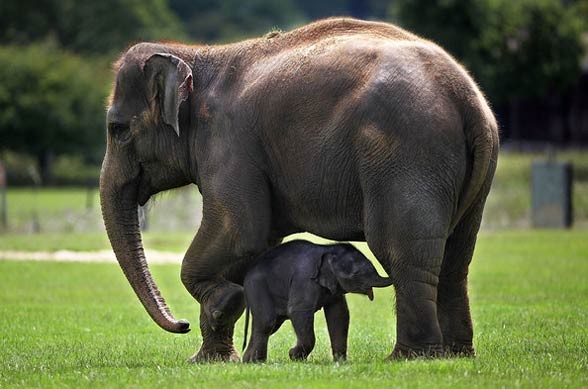
Asian elephant (Elephas maximus)
The Asian elephant is a large, herbivorous mammal that is native to the forests, grasslands, and wetlands of South and Southeast Asia. It is a member of the Elephantidae family, which also includes the African savanna elephant and the African forest elephant.
Adult males can reach lengths of up to 4 meters (13 feet) and weigh up to 5,500 kilograms (12,125 pounds), while females are generally smaller, reaching lengths of up to 3.5 meters (11.5 feet) and weighing up to 3,000 kilograms (6,614 pounds). Males are about 2.75 m (9.0 ft) tall at the shoulder while cows are smaller at about 2.40 m (7.9 ft) at the shoulder. ). Large males have been recorded reaching 7,000 kg (15,400 lb).
Asian elephants have a large, stocky build, with a long, curved trunk and large, floppy ears. They are typically grey or brown in color, with a lighter underside and a thick, wrinkled skin that is covered in short, coarse hairs. They have a single, straight tusk on the upper jaw, which they use for digging, lifting, and carrying objects.
Asian elephants are highly adapted to living in the diverse habitats of their native range, and they are skilled climbers and swimmers. They are found in a variety of grassland and forest habitats, including savannas, bushlands, and rainforests, and they are known to be active during the day and night. Asian elephants are social animals that live in herds of up to several dozen individuals, which are led by a dominant female.
Asian elephants are an endangered species due to habitat loss, poaching, and other human activities, and conservation efforts are underway to protect and restore populations of these animals.
The heaviest land animal:
1. African bush elephant – 10,400 kg (22,928 lb)
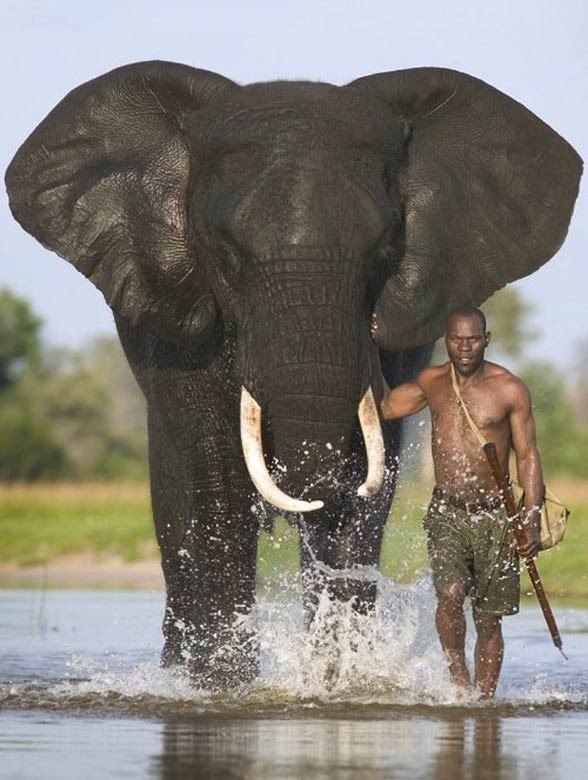
African bush elephant (Loxodonta africana)
The African bush elephant is a large, herbivorous mammal that is native to the grasslands, savannas, and forests of Africa. It is a member of the Elephantidae family, which also includes the Asian elephant and the African forest elephant.
Adult males can reach lengths of up to 4 meters (13 feet) and weigh up to 6,000 kilograms (13,228 pounds), while females are generally smaller, reaching lengths of up to 3.5 meters (11.5 feet) and weighing up to 4,000 kilograms (8,818 pounds). Large males have been recorded reaching 10,400 kg (22,928 lb)
African bush elephants have a large, stocky build, with a long, curved trunk and large, floppy ears. They are typically grey or brown in color, with a lighter underside and a thick, wrinkled skin that is covered in short, coarse hairs. They have a single, straight tusk on the upper jaw, which they use for digging, lifting, and carrying objects.
African bush elephants are highly adapted to living in the diverse habitats of their native range, and they are skilled climbers and swimmers. They are found in a variety of grassland and forest habitats, including savannas, bushlands, and rainforests, and they are known to be active during the day and night. African bush elephants are social animals that live in herds of up to several dozen individuals, which are led by a dominant female.
African bush elephants are a vulnerable species due to habitat loss, poaching, and other human activities, and conservation efforts are underway to protect and restore populations of these animals.
African bush elephants are a vulnerable species due to habitat loss, poaching, and other human activities, and conservation efforts are underway to protect and restore populations of these animals.

